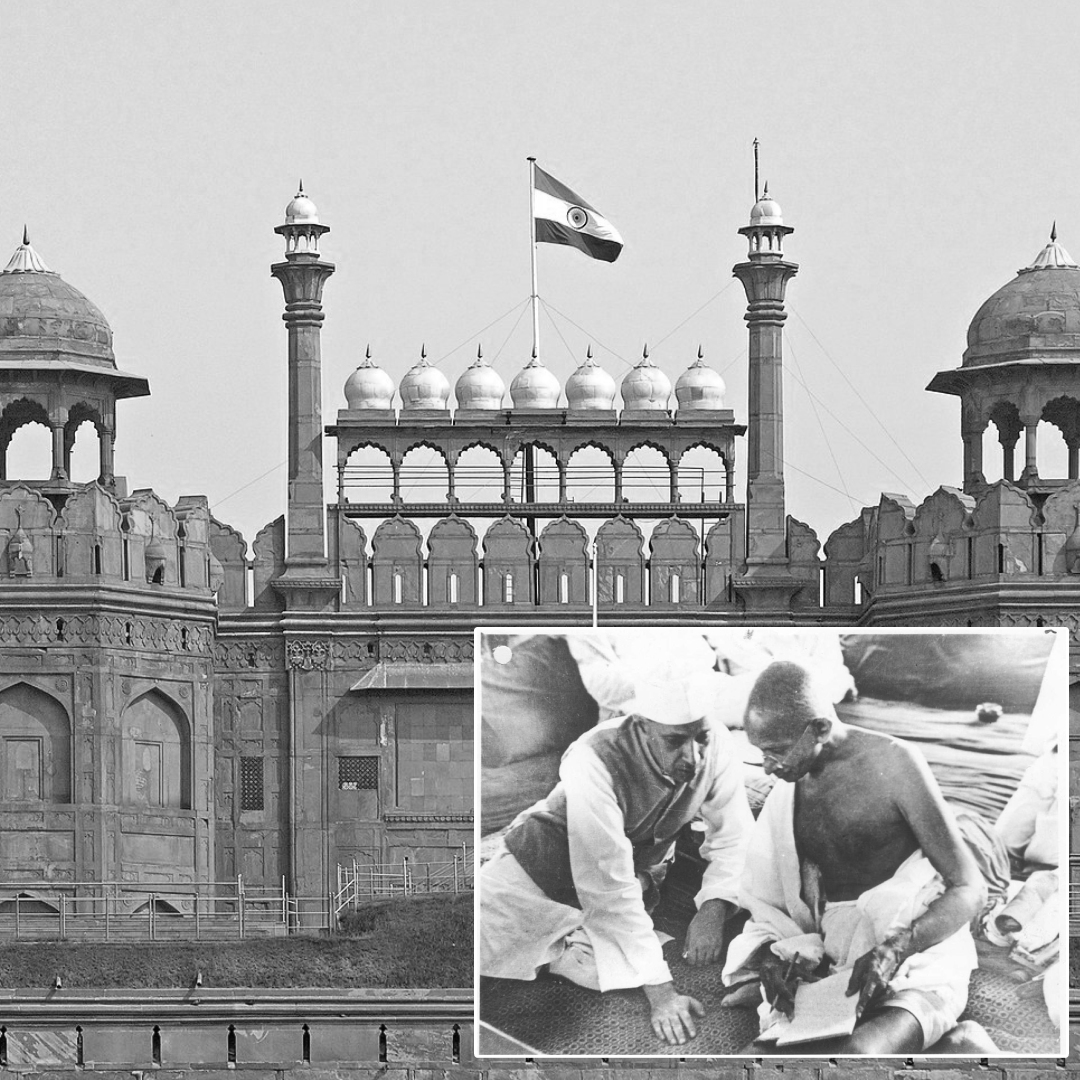75th Independence Day: Here're 10 Key Points & Facts You Need To Know About India's Freedom Struggle
Writer: Ronit Kumar Singh
A confident and reliable journalist who always desires to toss the unheard voices. I cover politics and governance extensively through stories.
India, 9 Aug 2022 7:01 AM GMT | Updated 9 Aug 2022 8:19 AM GMT
Editor : Shiva Chaudhary |
A post-graduate in Journalism and Mass Communication with relevant skills, specialising in content editing & writing. I believe in the precise dissemination of information based on facts to the public.
Creatives : Ronit Kumar Singh
A confident and reliable journalist who always desires to toss the unheard voices. I cover politics and governance extensively through stories.
India was under the control of the British East India Company and Crown rule from 1757 to 1947. A Series of planned incidents contributed to India's Independence, including Quit India Movement and Swadeshi Movement.
Being dedicated to the people of India, the Indian government is celebrating Azadi Ka Amrit Mahotsav program in light of the 75th year of Independence. After being ruled by the British East India Company (1757-1857) and British Crown rule (1858-1947), India earned freedom after a struggle of about 200 years.
The sacrifice and courage of Indian freedom fighters ousted British rule to free the nation on August 15, 1947. A series of planned events occurred between these two centuries, contributing to India's freedom struggle, including the Swadeshi Movement, Quit India Movement, and others.
Many freedom fighters like Mangal Pandey, Bhagat Singh, Bal Gangadhar Tilak, and Rani Laxmi Bai, to name a few, made a remarkable contribution to earning freedom for India from Colonial rule. After India's complete Independence from the crown rule, huge tasks were lying ahead for the Indian lawmakers to run the country progressively. Here're some key events and facts related to India's Independence.
India's Freedom Struggle
India Rebellion Of 1857
The first struggle for an Independent India started in 1857, widely known as the Sepoy Mutiny or Indian Rebellion of 1857. The freedom fighters, including Mangal Pandey, Bahadur Shah Zafar, Rani Laxmi Bai, and Nana Sahib, led the camp against the British soldiers.
Later, it inspired and widespread across the country, where the colonial rule witnessed massive protests and independent Indian slogans.
Swadeshi Movement
The Swadeshi Movement began during the 1900s when massive agitation and unrest were carried out across the country to boycott foreign-made goods and services. Leaders like Bal Gangadhar Tilak started campaigning to use only India-made goods to promote the idea of 'Swadeshi.'
Later, Tilak and JRD Tata founded the famous Bombay Swadeshi Co-op stores company to promote India-made goods and boycott foreign products, which Mahatma Gandhi termed the soul of 'Swaraj' (Self-Governance/Rule), reported The Print.
Quit India Movement
The August Movement, popularly known as the Quit India Movement, was started on August 8, 1942, by the Bombay session of the All-India Congress Committee, led by Mahatma Gandhi. The camp was launched during World War II, which demanded an end to British rule in India.
It was supposed to be a non-violent movement. Still, Gandhi gave a slogan of 'Do or Die' to the people of India, urging the British administration to grant freedom to India.
First National Flag
The first national flag of India, with three stripes of colors including green, yellow and red, was hoisted at Parsee Bagan Square in Kolkata on August 7, 1906.
Later, in 1921, the current variant of the Indian flag with three stripes of colours- saffron, white, green and 24-spoke Ashoka Chakra was designed by Pingali Venkayya. It was adopted on July 22, 1947, and hoisted officially on August 15 of the same year.
National Anthem Of India
After India became an independent nation, it had no official national anthem. The song 'Bharoto Bhagya Bidhata', written by Rabindra Nath Tagore in 1911, was renamed 'Jan Gan Man.' The constituent assembly adopted the same on January 24, 1950, as the official national anthem of India.
Radcliffe Line
The Radcliffe Line was the boundary demarcated between the India and Pakistan region by the British officer Cyril Radcliffe on August 3, 1947. The line of separation between the Punjab and Pakistan region and the Bengal region of British India was published officially on August 17, 1947.
National Song Of India
The national song 'Vande Mataram' was the part of the novel 'Anandamath' written by Bankim Chandra Chatterjee during the 1880s. The constituent assembly officially adopted the national song on January 24, 1950.
Chatterjee wrote this article near Chinsurah of Hooghly district in Bengal, originally in Bengali and Sanskrit.
India's Independence
Along with Congo, Bahrain, Korea, and Liechtenstein, India also got freedom from colonial rule at midnight on August 15, 1947. The Indian Independence Act of 1947 partitioned British India into two new dominions of India and Pakistan.
Why Was August 15 Chosen?
The Indian leaders pressured the British parliament to give up their hold on the country. The last governor-general of India, Lord Mountbatten, was given the mandate by the parliament to transfer the self-governance power to India by June 30, 1948.
The Indian leaders fought against this decision as it was delaying the grant for Independence. Later, Mountbatten advanced the date to August 15, 1947, and said he didn't want further protests in the country.
First Tricolor Hoisting
The first Prime Minister of India, Jawahar Lal Nehru, hoisted the tricolor on August 15 at the Red Fort. In his speech, he mentioned, "Long years ago, we made a tryst with destiny, and now that time comes when we shall redeem our pledge. At the stroke of today's midnight hour, when the world sleeps, India will awake to life and freedom."
Also Read: Aruna Asaf Ali: Revisiting The Unsung Legacy Of 'Heroine Of 1942' In India's Independence Movement
 All section
All section















